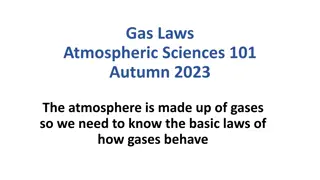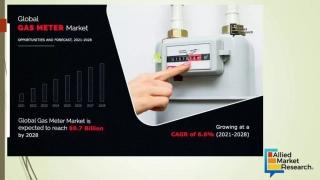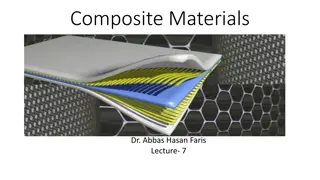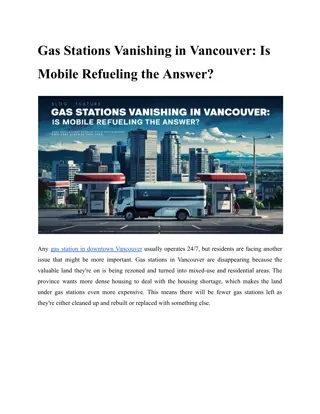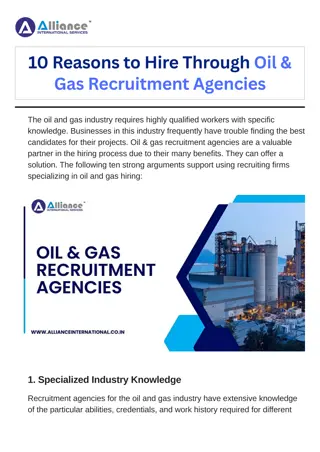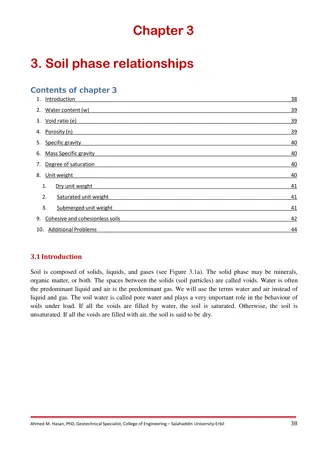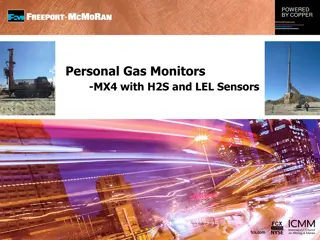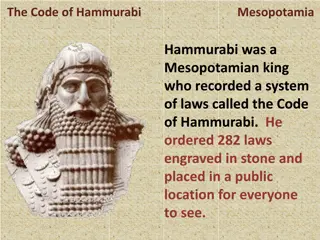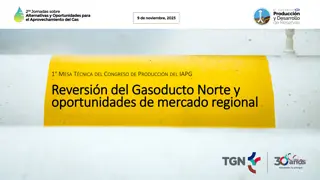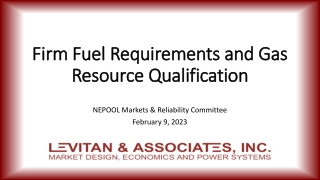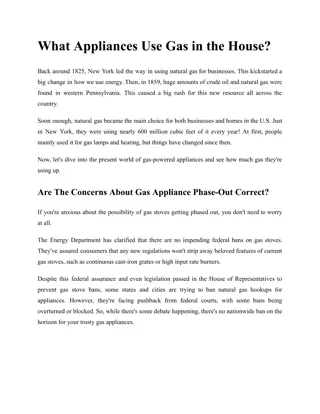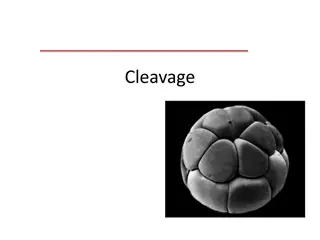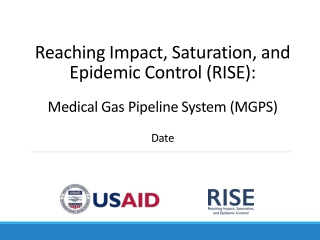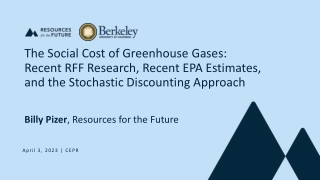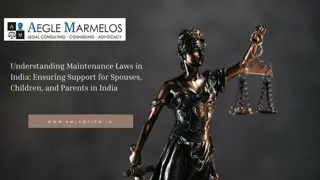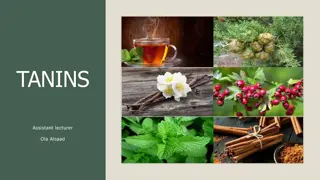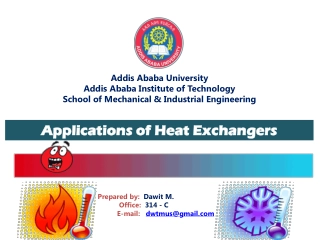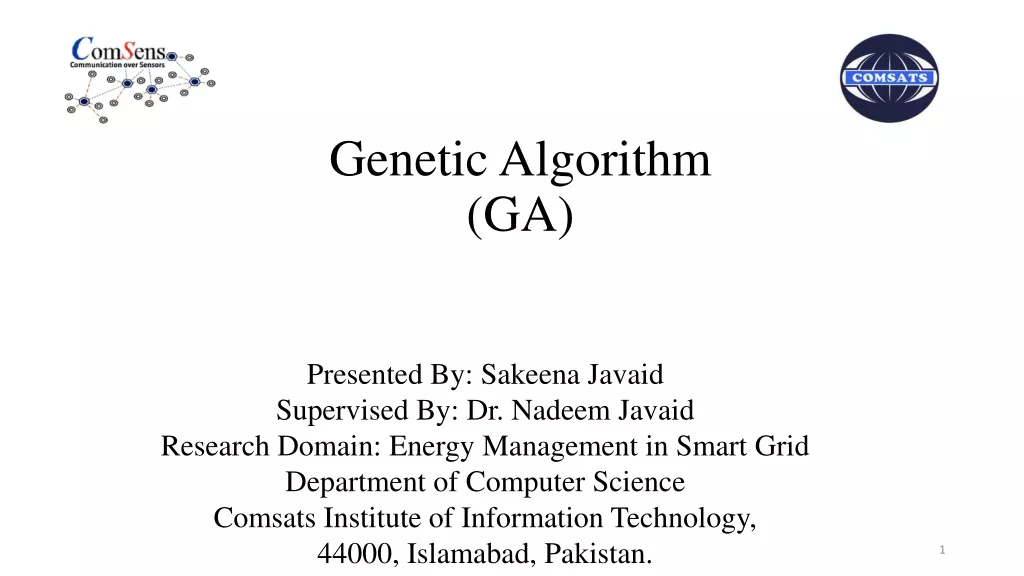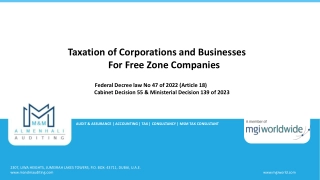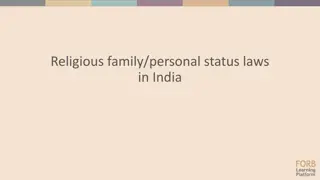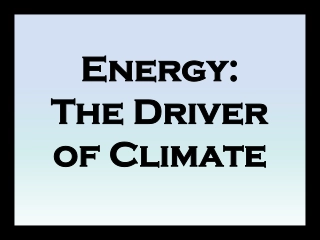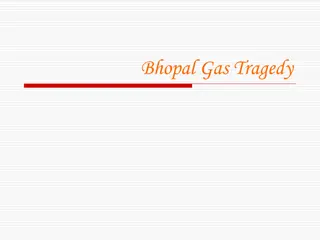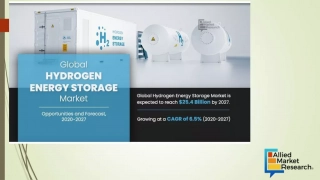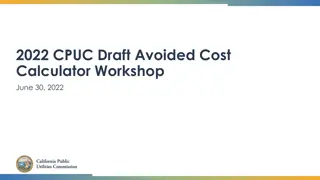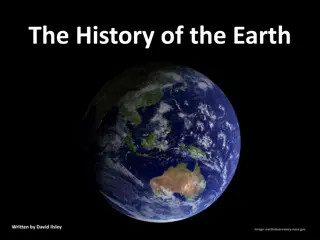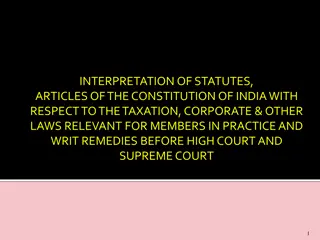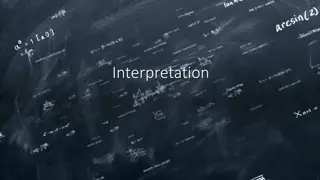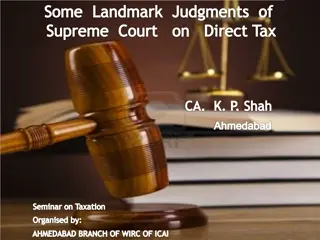Understanding Properties of Gases and Gas Laws
Gases exhibit unique properties compared to solids and liquids, including compressibility and variable densities. Pressure is defined as force per unit area, with common pressure units like atm, mmHg, and torr. Gas laws such as Gay-Lussac's Law, Boyle's Law, and Charles's Law describe the relationships between pressure, temperature, and volume in gases.
Understanding Properties of Gases and Gas Laws
PowerPoint presentation about 'Understanding Properties of Gases and Gas Laws'. This presentation describes the topic on Gases exhibit unique properties compared to solids and liquids, including compressibility and variable densities. Pressure is defined as force per unit area, with common pressure units like atm, mmHg, and torr. Gas laws such as Gay-Lussac's Law, Boyle's Law, and Charles's Law describe the relationships between pressure, temperature, and volume in gases.. Download this presentation absolutely free.
Presentation Transcript
Properties of Gases Gases differ from solids and liquids in the following ways: 1) A sample of gas assumes both the shape and volume of the container. 2) Gases are compressible. 3) The densities of gases are much smaller than those of liquids and solids and are highly variable depending on temperature and pressure. 4) Gases form homogeneous mixtures (solutions) with one another in any proportion. ????? ???? Pressure is defined as the force applied per unit area: ???????? = ? ?? ? ?? The SI unit of force is the newton (N), where: ? ? = ? ? ?? The SI unit of pressure is the pascal (Pa),defined as 1 newton per square meter. ? ?? = 2
Properties of Gases Units of Pressure Commonly Used in Chemistry Unit Origin Definition Standard Atmosphere (atm) pressure at sea level 1 atm = 101,325 Pa mmHg barometer measurement 1mmHg = 133.322 Pa torr Named after Torricelli (inventor of barometer) 1 torr = 133.322 Pa bar Same order of magnitude as atm but a decimal multiple of Pa 1 bar = 1 x 105 Pa A barometer is an instrument that is used to measure atmospheric pressure. A manometer is a device used to measure pressures other than atmospheric pressure. * Represents an exact number 1 atm* = 101,325 Pa = 760 mm Hg* = 760 torr* = 1.01325 bar = 14.7 psi manometer barometer 3
Practice Convert 1218 mm Hg to atm 1218 mmHg 1 atm 760 mmHg = 1.60 atm Convert 0.325 atm to torr 0.325 atm 760 torr 1 atm = 247 torr How many atm would be 1442 torr? 1442 torr 1 atm 760 torr = 1.90 atm 4
GayLussacs Law (Amantons law): The Pressure Temperature Relationship Pressure of a gas at a constant volume is directly proportional to the temperature. P1 T1 =P2 T2 A gas has a pressure of 0.12 atm at 421oC. What is the pressure at 273 K?: Convert Temperature to Kelvin = 421 + 273.15 = 694.15 K Use Gay Lussac s Law to solve for P2: 0.12 atm 273 K 694.15 K P2 = P1 T2 = 0.047 atm = T1 5
Boyles Law: The PressureVolume Relationship Boyle s law states that the pressure of a fixed amount of gas at a constant temperature is inversely proportional to the volume of the gas. P1V1= P2V2 at constant temperature Calculate the volume of a sample of gas at 5.75 atm if it occupies 5.14 L at 2.49 atm. (Assume constant temperature.) Use Boyle s law to solve for V2: = 2.49 atm 5.14 L 5.75 atm V2 = P1 V1 = 2.26 L P2 If a skin diver takes a breath at the surface, filling his lungs with 5.82 L of air, what volume will the air in his lungs occupy when he dives to a depth where the pressure of 1.92 atm? (Assume constant temperature and that the pressure at the surface is exactly 1 atm.) 1.00 atm 5.82 L 1.92 atm V2 = P1 V1 = = 3.03 L 6 P2
Charles Law: The TemperatureVolume Relationship Charles s Law states that the volume of a gas maintained at constant pressure is directly proportional to the absolute temperature of the gas. V1 T1 =V2 Higher temp. at constant pressure T2 Lower temp. A sample of gas originally occupies 29.1 L at 0.0 C. What is its new volume when it is heated to 15.0 C? (Assume constant pressure.) 288.15 K 29.1 L 273.15 K V2 = T2 V1 = = 30.7 L T1 A sample of argon gas that originally occupied 14.6 L at 25 C was heated to 50.0 C at constant pressure. What is its new volume? 323.15 K 14.6 L 298.15 K V2 = T2 V1 7 = = 15.8 L T1
Avogadros Law: The AmountVolume Relationship Avogadro s law states that the volume of a sample of gas is directly proportional to the number of moles in the sample at constant temperature and pressure. V1 n1 =V2 n2 at constant temperature and pressure What volume in liters of water vapor will be produced when 34 L of H2 and 17 L of O2 react according to the equation below at constant temperature and pressure: 2H2(g) + O2(g) 2H2O(g) Because volume is proportional to the number of moles, the balanced equation determines in what volume ratio the reactants combine and the ratio of product volume to reactant volume. The amounts of reactants given are stoichiometric amounts. 34 L of H2O will form. If we combine 3.0 L of NO and 1.5 L of O2, and they react according to the balanced equation 2NO(g) + O2(g) 2NO2(g), what volume of NO2 will be produced? (Assume that the reactants and products are all at the same temperature and pressure.) 8 3.0 L of NO2 will form.
The Combined Gas Law: The Pressure Temperature Amount Volume Relationship The combined gas law can be used to solve problems where any or all of the variable's changes. P1V1 n1T1 n2T2 =P2V2 If a child releases a 6.25 L helium balloon in the parking lot of an amusement park where the temperature is 28.50 and the air pressure is 757.2 mmHg, what will the volume of the balloon be when it has risen to an altitude where the temperature is 34.35 and the air pressure is 366.4 mmHg? 757.2 mmHg 238.80 K 6.25 L 366.4 mmHg 301.65 K V2=P1T2V1 = 10.2 L = P2T1 A sample of gas occupies 754 mL at 22oC and a pressure of 165 mm Hg. What is its volume if the temperature is raised to 42oC and the pressure is raised to 265 mm Hg? 0.217 atm 315.15 K 0.754 L 0.349 atm 295.15 K V2=P1T2V1 = 0.50 L = P2T1 10
The Ideal Gas Equation The ideal gas equation (below) describes the relationship among the four variables Pressure (P), Volume (V), moles (n), and Temperature (T). R is the proportionality constant, called the gas constant and its value and units depend on the units in which P and V are expressed. PV = nRT Fun Fact: If you solve the ideal gas equation for R, then you have one side of the equation for the combined gas law. Additionally, from the combined gas law you get all other gas law relationships. An ideal gas is a hypothetical sample of gas whose pressure- volume-temperature behavior is predicted accurately by the ideal gas equation. Various Equivalent Expression of the Gas Constant, R Numerical Value Unit L atm mol K J mol K L bar mol K cal mol K PV = nRT 0.08206 3RT ? 8.314 ?rms= 0.08314 11 1.987
The Ideal Gas Equation Standard Temperature and Pressure (STP) are a special set of conditions where: Pressure is 1 atm Temperature is 0 (273.15 K) Calculate the volume of a mole of ideal gas at 0 C and 1 atm. 0.08206 L atm K mol 1 atm 1 mol 273.15 K V =nRT = 22.41 L = P Calculate the volume of a mole of ideal gas at room temperature (25 C) and 1 atm. 0.08206 L atm K mol 1 atm 1 mol 298.15 K V =nRT = 24.5 L = P 12
Practice ?? = ??? What is the pressure exerted by 1.55 g of Xe gas at 20 C in a 560 mL flask? 0.08206 L atm mol K 0.560 L 0.0118 mol Xe 293.15 K P =nRT = = 0.507 atm V A 1.00 g sample of water vaporizes completely inside a 10.0 L container. What is the pressure of the water vapor at a temperature of 150 C? 1.00 g H2O 1 mol H2O 18.02 g H2O = 0.055 mol H2O 0.08206 L atm mol K 10.0 L 0.055 mol H2O 423.15 K P =nRT = 0.193 atm = V 28.15 mol of a gas is in a 1799 L container at 0 C. What is the pressure? 0.08206 L atm mol K 1799 L 28.15 mol 273.15 K P =nRT = = 0.351 atm 13 V
Applications of the Ideal Gas Equation Using algebraic manipulation, it is possible to solve for variables other than those that appear explicitly in the ideal gas equation (like density). MM is the Molar Mass(in g mol 1) PV = nRT n V= n V= d is the density (in g L 1) P RT P RTMM MM P MM R T d = Carbon dioxide is effective in fire extinguishers partly because its density is greater than that of air, so CO2 can smother the flames by depriving them of oxygen. (Air has a density of approximately 1.2 g L 1 at room temperature and 1 atm.) Calculate the density of CO2 at room temperature (25 C) and 1.0 atm. 44.01 g mol 1 atm ? ?? ? ? = 1.80 g L 1 = ? = 0.08206 L atm K mol 14 298.15 K
Practice What is the molar mass of a gas that has a density of 5.75 g L 1 at STP? 5.75 g L 0.08206 L atm mol K 1 atm 273.15 K =128.9 g mol ?? =dRT = P Ammonia is placed in a container at 550 C and 245 atm. What is the density? 17.04 g mol 0.08206 L atm K mol 245 atm 823.15 K=61.81 g P MM R T = d = L At 741 torr and 44 C, 7.10 g of a gas occupies a volume of 5.40 L. What is the molar mass of the gas? ?? = ??? ? =?? ?? ?? =????? ??? 7.10 ? ??? 0.202 ??? ??? ?? = 0.975 atm 5.40 L 0.08206 L atm mol K ? = 317.15 K ?? =35.15 ? ??? ? = 0.202 mol gas What is the molar mass (in g mol 1 to one decimal place) of a gas which has a density of 1.30 g L 1 measured at 27 C and 0.400 atm? 1.30 g L 0.08206 L atm mol K 0.400 atm 300.15 K ?? =dRT =80.05 g P= mol 15
Gas Mixtures: Daltons Law of Partial Pressures When two or more gases are placed in a container, each gas behaves as though it occupies the container alone. Find the pressure of each gas and then sum all pressures for total pressure of the system. 1.00 mole of N2 in a 5.00 L container at 0 C exerts a pressure of 4.48 atm. 0.08206 L atm K mol 5.00 L Ptotal= Pi 1 mol 273.15 K Pi N2=nRT = = 4.48 atm V An additional 1.00 mole of O2 is added to the same container. It exerts an additional 4.48 atm of pressure. 0.08206 L atm K mol 5.00 L 1 mol 273.15 K Pi O2=nRT = = 4.48 atm V The total pressure of the mixture is the sum of the partial pressures (Pi ): Ptotal = Pi N2 + Pi O2 = 4.48 atm + 4.48 atm = 8.96 atm 16
Gas Mixtures: Daltons Law of Partial Pressures Each component of a gas mixture exerts a pressure independent of the other components. The total pressure is the sum of the partial pressures. 17
Practice A 1.00 L vessel contains 0.215 mole of N2 gas and 0.0118 mole of H2 gas at 25.5 C. Determine the partial pressure of each component and the total pressure in the vessel. 0.08206 L atm K mol 1.00 L 0.215 mol 298.65 K Pi N2=nRT V= = 5.27 atm 0.08206 L atm K mol 1.00 L 0.0118 mol 298.65 K Pi H2=nRT V= = 0.289 atm Ptotal = Pi N2 + Pi H2 = 5.27 atm + 0.289 atm = 5.56 atm What is the total pressure exerted by a mixture of 1.50 g H2 and 5.00 g N2 in a 5.00 L vessel at 25 C? 1.50 g H2 1 mol 2.02 g 0.08206 L atm K mol 5.00 L 0.215 mol 298.15 K Pi H2=nRT V= = 3.63 atm = 0.7426 mol H2 0.08206 L atm K mol 5.00 L 5.00 g N2 1 mol 18.02 g 0.1784 mol 298.15 K Pi N2=nRT V= = 0.8730 atm = 0.1784 mol N2 18 Ptotal = Pi H2 + Pi N2 = 3.63 atm + 0.8730 atm = 4.50 atm
Mole Fractions The relative amounts of the components in a gas mixture can be specified using mole fractions. ?i ?i= ?total There are three things to remember about mole fractions: 1) The mole fraction of a mixture component is always less than 1. 2) The sum of mole fractions for all components of a mixture is always 1. 3) Mole fractions are dimensionless. ?i ?i= ?total n and P are proportional to each other at a specified Temperature and Volume ?i ?total = ?i ?i ?total = ?i 19
Practice In 1999, the FDA approved the use of nitric oxide (NO) to treat and prevent lung disease, which occurs commonly in premature infants. The nitric oxide used in this therapy is supplied to hospitals in the form of a N2/NO mixture. Calculate the mole fraction of NO in a 10.00-L gas cylinder at room temperature (25 ) that contains 6.022 mol N2 and in which the total pressure is 14.75 atm. ?Total=?Total? ?? 0.08206 L atm K mol 14.75 atm 10.0 L = = 6.029 mol gas total 298.15 K ?NO+ ??2= ?Total ?NO= ?Total ??2 = 6.029 6.022 = 0.007 mol NO ?i ?i= ?total 0.007 mol NO 6.029 Total mol ?i= ?i= 0.001 20
Reactions with Gaseous Reactants and Products: Calculating the Required Volume of a Gaseous Reactant 2 CO(g) + O2(g) 2 CO2(g) The ratio of carbon monoxide to oxygen is 2:1 in moles or volume (all gas phase) 2 Na(s) + Cl2(g) 2 NaCl(s) (use the ideal gas equation for 1 gas reactant) PV = nRT Molar Mass mol:mol liters Cl2 grams Na moles Na moles Cl2 21
Practice Sodium peroxide (Na2O2) is used to remove carbon dioxide from (and add oxygen to) the air supply in spacecrafts. It works by reacting with CO2 in the air to produce sodium carbonate (Na2CO3) and O2. 2Na2O2(s) + 2CO2(g) 2Na2CO3(s) + O2(g) What volume (in liters) of CO2 (at STP) will react with a kilogram of Na2O2? 1000 g 1 mol Na2O2 77.98 g Na2O2 2 mol CO2 2 mol Na2O2= 12.82 mol CO2 0.08206 L atm K mol 1 atm 12.82 mol CO2 273.15 K ?CO2=nRT = = 287.4 L CO2 P What volume of oxygen at 45 C and 2 atm pressure is needed to react with nitrogen gas to form 0.35 moles of N2O4? 2O2(g) + N2(g) N2O4(g) 0.35 mol N2O4 2 mol O2 1 mol N2O4= 0.7 mol O2 0.08206 L atm K mol 2 atm 0.7 mol O2 318.15 K ?O2=nRT = = 9.138 L O2 P If 2.7 g of Al metal is reacted with excess HCl, how many liters of H2 gas are produced at 25 C and 1.00 atm pressure? 2Al(s) + 6HCl(aq) 3H2(g) + 2AlCl3 2.7 g 1 mol ?? 26.98 g ??3 mol H2 2 mol ??= 0.15 mol H2 0.08206 L atm K mol 1.00 atm 0.15 mol H2 298.15 K 22 VH2=nRT = = 3.67 L H2 P
Using Partial Pressures to Solve Problems The volume of gas produced by a chemical reaction can be measured using an apparatus like the one shown below. When gas is collected over water in this manner, the total pressure is the sum of two partial pressures: Ptotal = Pcollected gas + PH2O The vapor pressure of water is known at various temps. Vapor Pressure of Water as a Function of Temperature T( ) P(torr) T( ) P(torr) T( ) P(torr) 0 4.6 35 42.2 70 233.7 5 6.5 40 55.3 75 289.1 10 9.2 45 71.9 80 355.1 15 12.8 50 92.5 85 433.6 20 17.5 55 118.0 90 525.8 25 23.8 60 149.4 95 633.9 24 30 31.8 65 187.5 100 760.0
Practice Calcium metal reacts with water to produce hydrogen gas: Ca(s) + H2O(l) Ca(OH)2(aq) + H2(g) Determine the mass of H2 produced at 25 and 0.967 atm when 525 mL of the gas is collected over water. ?H2=?H2? ??2=?Total ??2? = 0.967 atm 0.0313 atm = 0.9357 atm ??2?+ ??2= ?Total 0.9357 atm 0.525 L 0.08206 L atm K mol ?H2= 2.01 x 10 2 mol H2 = ?? 298.15 K 2.01 x 10 2 mol H2 2.016 g H2 1 mol H2 = 0.0405 g H2 25
The Gas Laws and the Kinetic Molecular Theory Cooling at constant volume: pressure decreases Heating at constant volume: pressure increases Cooling at constant pressure: volume decreases Heating at constant pressure: volume increases 27
The Gas Laws and the Kinetic Molecular Theory The presence of additional molecules causes an increase in pressure. 28
The Kinetic Molecular Theory The kinetic molecular theory explains how the molecular nature of gases gives rise to their macroscopic properties. The basic assumptions of the kinetic molecular theory are as follows: 1) A gas is composed of particles that are separated by large distances. The volume occupied by individual molecules is negligible. Gases are compressible because molecules in the gas phase are separated by large distances. 2) Gas molecules are constantly in random motion, moving in straight paths, colliding with perfectly elastic collisions. Pressure is the result of the collisions of gas molecules with the walls of their container. Decreasing volume increases the frequency of collisions. Pressure increases as collision frequency increases. 3) Gas molecules do not exert attractive or repulsive forces on one another. 4) The average kinetic energy of a gas molecules in a sample is proportional to the absolute temperature: ?k ? Heating a sample of gas increases its average kinetic energy. Gas molecules must move faster at higher T. Faster molecules collide more frequently and at a greater speed. Pressure increases as collision frequency increases. 29
The Kinetic Molecular Theory and Molecular Speed The root mean square (rms) speed (?rms) is the speed of a molecule with the average kinetic energy in a gas sample. Where, ?rmsis the average molecular speed (m/s), R = gas constant (8.314 J/mol K), T = Temperature (K), M = Formula weight (g/mol) 3RT ? ?rms= 1 J = 1 kgm2/s2 = 1000 g m2/s2 ?rms is directly proportional to temperature (makes sense based on assumption 4 also) ?rms is inversely proportional to the square root of MM. 30
The Kinetic Molecular Theory When two gases are at the same temperature, it is possible to compare the the urms values of the different gases. ?rms1 ?rms2 ?2 ?1 = Determine how much faster a helium atom moves, on average, than a carbon dioxide molecule at the same temperature. 44.02 g 1 mol 4.003 g 1 mol ?rms?? ?rms??2 On average, He atoms move 3.316 times as fast as CO2 molecules at the same temperature. = = 3.316 31
Diffusion and Effusion Diffusion is the mixing of gases as the result of random motion and frequent collisions. Effusion is the escape of gas molecules from a container to a region of vacuum. Graham s law states that the rate of diffusion or effusion of a gas is inversely proportional to the square root of its molar mass. ???? 1 ? 32
Practice Determine the molar mass and identity of a diatomic gas that moves 4.67 times as fast as CO2. ?rms1 ?rms2 ?1 ?rmsunknown gas ?rmsCO2 ?rmsunknown gas = 4.67 ?rmsCO2 ?2 = = 4.67 ?rms1 ?rms2 44.02 g/mol M unknown ?rms1 ?rms2 ?2 ?1 = 4.67 = ? = 2.018 g/mol = 4.67 = The gas must be H2. How much faster will hydrogen gas effuse than oxygen gas? ?rmsH2 ?rmsO2 32.00 g/mol 2.02 g/mol = 3.98 times as fast = Place these gases in order of increasing average molecular speed at 25 C : Kr, CH4, N2, CH2Cl2 CH2Cl2 < Kr < N2 < CH4 33 Higher Molar Mass leads to a slower gas
Real Gases: Factors that cause deviation from Ideal Behavior At high pressure molecules are close together and individual volume becomes significant (PV=nRT) At low temperatures molecules are moving slower and any intermolecular 3?? ?) forces become significant (u= Attractions between gas molecules serve to decrease the gas volume at constant pressure compared to an ideal gas whose molecules experience no attractive forces. These attractive forces will decrease the force of collisions between the molecules and container walls, therefore reducing the pressure exerted compared to an ideal gas. 34
The van der Waals Equation The van der Waals equation is useful for gases that do not behave ideally. experimentally measured pressure container volume a = molecular attraction (low pressure) b = volume of molecules (high pressure/small volume) ? +??2 ? ?? = ??? ?2 corrected volume corrected pressure Van der Waals Constants of Some Common Gases ??? ? ???? 0.034 0.211 1.34 0.244 1.39 ? ??? ? ???? 1.36 6.49 2.25 20.4 5.46 ? Gas Gas a b a b ??? ??? He Ne Ar H2 N2 0.0237 0.0171 0.0322 0.0266 0.0391 O2 Cl2 CH4 CCl4 H2O 0.0318 0.0562 0.0428 0.138 0.0305 35
The van der Waals Constants Compressibility as a Function of Pressure various gases N2 36



